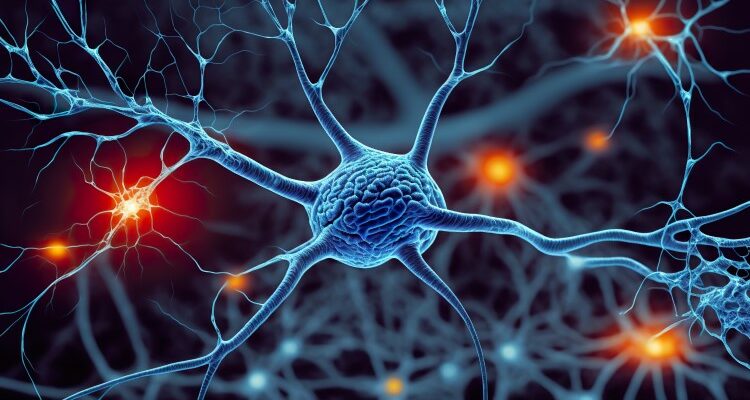Stem Cells for Neurologic Diseases
Benefits of Stem Cells in Neurologic Diseases
Stem cells offer significant potential in treating neurologic diseases by regenerating damaged neurons and supporting the repair of neural tissues. They can differentiate into various types of neural cells, which helps in replenishing the lost or damaged cells in conditions like Parkinson’s disease, Alzheimer’s disease, and multiple sclerosis. This regeneration can help restore normal neural function, potentially improving motor skills, cognitive functions, and overall quality of life. Additionally, stem cells can modulate the immune response and reduce inflammation in the brain, which is crucial for conditions like multiple sclerosis where chronic inflammation leads to neural damage.
Applications in Neurologic Diseases
Stem cell treatments are being explored for a variety of neurologic diseases. In Parkinson’s disease, stem cells can be used to replace the dopamine-producing neurons that are progressively lost, improving motor control and reducing symptoms. For Alzheimer’s disease, stem cells can help in regenerating neurons and synapses lost due to the disease, potentially slowing down cognitive decline. In multiple sclerosis, stem cells can repair the damaged myelin sheath around neurons, improving neural transmission and reducing symptoms. These treatments offer hope for significant improvements in patient outcomes by addressing the underlying causes of these diseases rather than just managing symptoms.
Incorporation into Procedures
Stem cells can be delivered to the brain through various methods. Intravenous infusion allows stem cells to circulate and reach affected areas, providing systemic benefits such as reducing inflammation and supporting neural repair. Direct injection into the brain or cerebrospinal fluid can deliver stem cells more precisely to damaged areas, enhancing their regenerative effects. Another approach is using stem cell-derived exosomes, which can carry beneficial molecules to neural tissues, promoting repair and reducing inflammation. Each method has its own advantages and is chosen based on the specific needs of the patient and the disease being treated.
Safety and Efficacy
The safety profile of stem cell treatments for neurologic diseases is continually being assessed through rigorous clinical trials. Most studies report that adverse effects are minimal and manageable, ensuring the treatments are safe for patients. Regulatory standards and protocols are in place to ensure the quality and safety of stem cell products used in treatments. Numerous clinical studies support the efficacy of stem cell-based therapies in improving outcomes for patients with neurologic diseases. These studies report improvements in motor functions, cognitive abilities, and overall neurological health, demonstrating the regenerative potential of stem cells in these conditions.
Future Trends in Neurologic Diseases
Gene editing technologies like CRISPR-Cas9 are being explored to enhance the efficacy of stem cell treatments for neurologic diseases. By correcting genetic defects that contribute to these conditions, gene editing can improve the therapeutic potential of stem cells. Personalized medicine is also advancing, enabling the development of tailored stem cell treatments based on an individual’s genetic and neurological profile. This personalized approach can enhance treatment efficacy and reduce the risk of adverse effects. Ongoing research focuses on optimizing stem cell delivery methods, improving the survival and integration of transplanted cells, and exploring novel sources of stem cells. Potential breakthroughs in these areas could revolutionize the treatment of neurologic diseases, offering new hope for patients and transforming the field of neurology.
Frequently Asked Questions
Stem cell solutions are being explored for a range of neurologic diseases, including Parkinson’s disease, Alzheimer’s disease, multiple sclerosis, spinal cord injuries, and stroke. These solutions aim to regenerate damaged neurons, reduce inflammation, and restore normal neural functions.
Stem cells can be administered through intravenous infusion, direct injection into the brain or cerebrospinal fluid, and the use of stem cell-derived exosomes. The method chosen depends on the specific disease and the treatment goals.
Patients may experience improvements in motor skills, cognitive functions, and overall neurological health. The extent of improvement varies depending on the disease, the severity of the condition, and the individual response to the solution.
Clinical studies indicate that stem cell solutions have a favorable safety profile, with most adverse effects being mild and transient. Rigorous clinical trials and regulatory standards ensure the safety and quality of stem cell products.
The duration of the effects can vary. Some patients experience long-term benefits, while others may require additional solutions over time. Ongoing research aims to optimize the longevity and efficacy of these therapies.
Improvements can vary depending on the individual and the condition being addressed. Some patients may notice changes within weeks, while others might take several months to observe significant improvements.
Coverage for stem cell solutions varies by insurance provider and the specific protocol. It’s important to check with your insurance company and the provider for details on coverage and potential out-of-pocket costs.
Recovery time is generally minimal. Most patients can resume normal activities within a few days after the procedure. However, recovery may vary based on the method and individual patient factors.
Yes, there are numerous ongoing clinical trials investigating the efficacy and safety of stem cell solutions for various neurologic diseases. These trials are essential for advancing the field and making these solutions more widely available.

